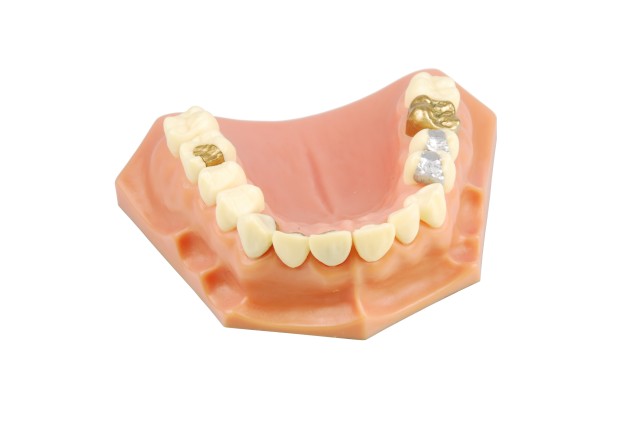Technological advances have given dentists and patients several options when it comes to choosing materials to fill cavities. Among the options are natural tooth-colored materials such as resin-based composite fillings and more traditional dental fillings, made of metal amalgam. The introduction of new materials for fillings has been advantageous, particularly in terms of aesthetics, but does not remove the need for traditional dental materials that are stronger, more durable and less expensive.
What is Dental Amalgam?
Dental amalgams commonly are known as silver fillings, but they are made of a mixture of silver, mercury, tin, and copper. Fifty percent of the filling is made up of mercury that helps bind the metals together. These materials provide a strong, hard, durable filling. Many dentists find that amalgam is easier to control and manipulate when filling the cavity. In addition, it’s stronger than resin-based composite filling. Many patients favor dental amalgam for its affordability and capacity to fill cavities efficiently. In addition, amalgam fillings typically last for approximately 12 years, while composite fillings are expected to last five to seven years. It is approximated that more than 1 billion amalgam fillings are placed yearly.
What are Resin Composite Fillings?
Resin composite fillings are mixed with plastic and ceramic materials. Many patients like resin composite fillings because the mimic the appearance of natural teeth. In the past, resin compounds weren’t durable enough to be used in back teeth due to powerful grinding and chewing occur. Technology has continued to advance in the past ten year and has allowed resin material to fill cavities in the posterior teeth. After a composite filling is placed, patients may experience sensitivity along with color change. Drinking and eating certain items can slightly alter the shade of the filling. Our dentists can place a translucent plastic coating over the composite to prevent the color from changing if a patient is concerned about tooth color. Composites tend to wear out sooner than amalgam fillings in larger cavities, although they hold up as well in small cavities.
Cost of Composite Fillings vs. Amalgam Fillings
Although prices will vary, composites are typically two times the price of amalgam fillings. The cost of dental fillings depends on a variety of factors, including the kind of insurance the patient has, the number of teeth that need filling, type of filling, and the dentist who administers the procedure. In most cases, insurance companies do not cover the total expense of composite fillings. They typically pay for the cost of an amalgam, and the patient is accountable for paying the difference.
How to Avoid Fillings
Prevention is the essential in order to avoid dental fillings. Decrease the risk of cavities and other dental diseases simply by:
- Brushing your teeth morning and night with a fluoride toothpaste
- Flossing daily
- Eating a balanced diet
- Visit the dentist frequently
Proper oral hygiene will help the prevention of cavities, thereby avoiding fillings.
At Layton Hills Dental, we strive to build a long-term relationship between our staff and patients and provide high quality, consumer friendly dental services for the entire family. Our procedures are performed by our highly trained dental staff that utilizes the latest technologies available. Whether you need composite fillings, Invisalign, veneers, Implants, or crowns, let us help you choose the best option to improve your smile. For more information on amalgan vs composite fillings, call Layton Hills Dental today at 801.543.2273.


